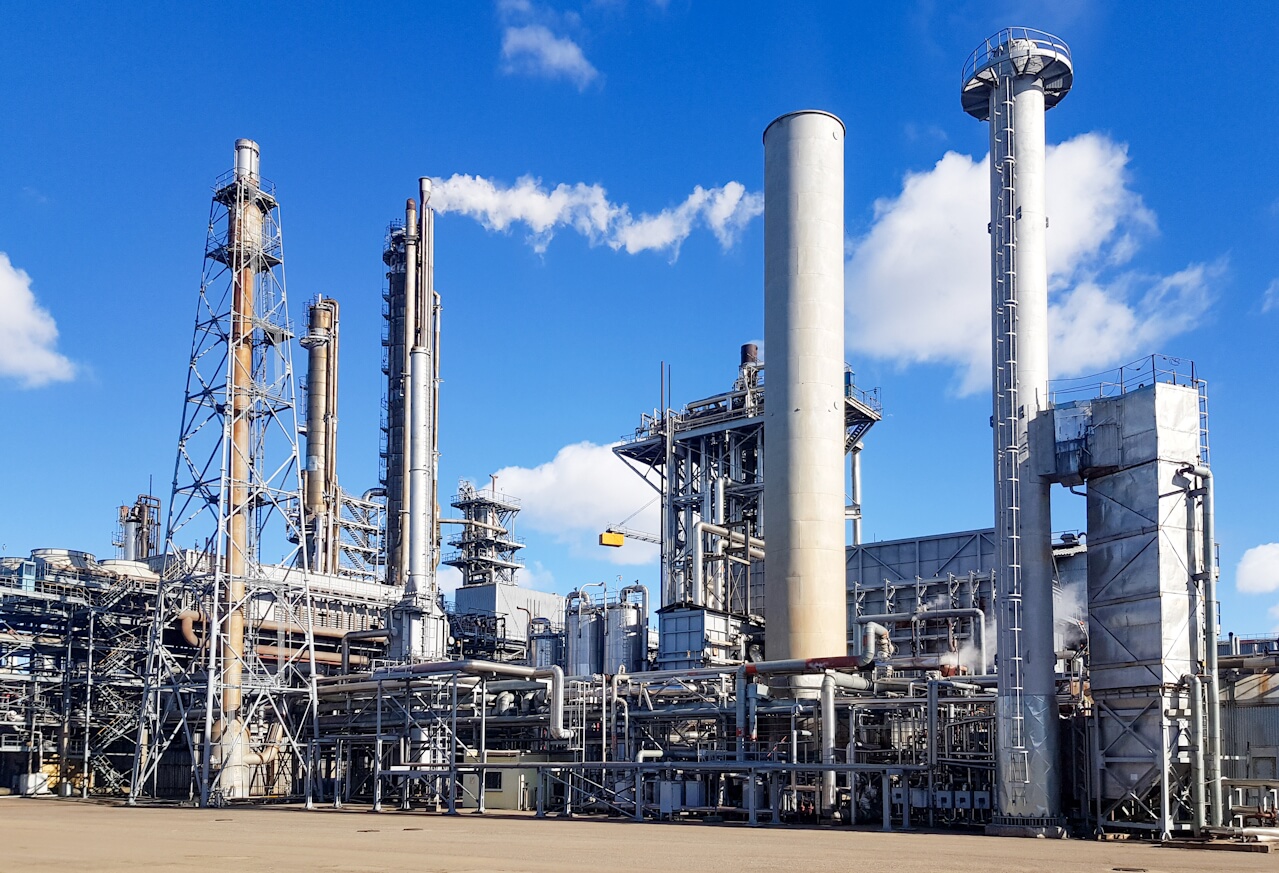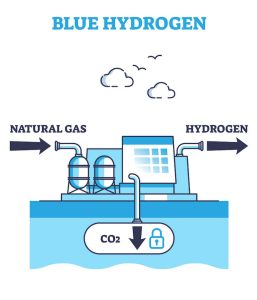
The traditional method to extract hydrogen from methane creates large amounts of CO2. However, hydraulic power recovery turbines can improve operational efficiency and reduce energy consumption, as demonstrated by a new hydrogen plant in Texas.
By Joanne McIntyre, Stainless Steel World
To create ‘blue’ hydrogen, a carbon capture process that requires considerable electrical energy is needed. However, a new plant being built in Texas will use two hydraulic power recovery turbines (HPRTs) to improve operational efficiency and reduce energy consumption dramatically.
The majority of the world’s industrial hydrogen is derived from methane (natural gas), but the traditional extraction method creates large volumes of carbon dioxide. Therefore, a carbon capture process is required where an amine solvent is used to extract the CO2 from the gas stream. However, this uses a high-pressure pump, which typically requires an electric motor in the multi-megawatt range, resulting in considerable running costs.
New build hydrogen plant
For this new-build project in Texas, the global engineering company for industrial gases will build, own and operate a new hydrogen plant that will supply clean hydrogen and other industrial gases to the neighboring blue ammonia manufacturing site. The new complex will include autothermal reforming with carbon capture and a large air separation plant.
Sulzer was brought in at the very early planning stages to provide support with pump specifications and layout. Although the new plant will be built from the ground up, the overall footprint of the site is quite restrictive, and this has influenced some of the design features. A competitive tender was issued for two pump-turbine skids, each with a back-up pump to cover any unplanned maintenance interventions. The two pump trains will work in parallel, making reliability a key requirement.
Austenitic stainless steel
A combination of corrosion agents and solids is always specifically challenging as each requirement requires different, contradictory material properties. Corrosion resistant materials often are not specifically erosion resistant, and highly erosion resistant materials often are not corrosion resistant. The applied materials in the plant present a reliable selection to serve both requirements to a reliable limit.
The material grade applied for the pump and the turbine is austenitic stainless steel type 316 (cast, rolled and forged), where wear parts additionally are hard-faced. This grade was specified because the pumped liquid consists of a mixture of water, amine and CO2, which in total is corrosive. Additionally, it contains traces of suspended solids. For this liquid, the applied materials have proven to be suitable for a long and reliable operating service life.
Various grades of stainless steel are utilized for other equipment in the plant, with selection guided by the application. In general, lower corrosion resistant stainless steel like the 400 series are applied whenever possible, as these materials provide higher strength, reducing the amount of material needed to be applied (lower wall thickness).
More serious corrosion attacks require higher grades such as the 300 series, and sometimes even Ni-base materials, which have much higher corrosion resistance.
In the actual application, 316 series stainless steel is used for piping within the pump and turbine unit. Additionally, there are drain pipes, lube oil supply and return lines, and mechanical seal piping, which also have some corrosive challenges due to the pumped liquid, barrier fluid, lube oil and contamination with e.g. condensate.
Reducing operating costs
 As an owner/operator of the new plant, the customer prioritized the running costs of the new equipment, along with its reliability, which led to the decision to install the HPRT from Sulzer. In a lean amine process, the solvent absorbs CO2 as it passes through the contactor, after which the gas is depressurized through a flow control valve (FCV). The CO2 and other impurities are removed in a flash tank before returning to the beginning of the cycle.
As an owner/operator of the new plant, the customer prioritized the running costs of the new equipment, along with its reliability, which led to the decision to install the HPRT from Sulzer. In a lean amine process, the solvent absorbs CO2 as it passes through the contactor, after which the gas is depressurized through a flow control valve (FCV). The CO2 and other impurities are removed in a flash tank before returning to the beginning of the cycle.
Instead of wasting the energy of the pressurized gas, modern plants can use HPRTs in place of the FCV and use the energy to power the main pump. The most effective way to integrate an HPRT is to build a skid unit that contains the main amine pump, its electric drive motor and the HPRT, which is connected to the other end of the motor via a clutch assembly.
Each skid unit will be unique to its intended application, and this requires considerable engineering expertise as well as experience in the design of pumps and turbines. In Sulzer’s case, these capabilities are further supported by the ability to test the complete skid under rated conditions before it is installed. This ensures that the expected performance is proven well before the plant is commissioned.
Global cooperation
For the new plant, Sulzer offered a package that included two HPRT skids as well as two back-up pumps, all of which were supported by references to similar equipment working in comparable applications. The turbine supplies approximately 75% of the rated power of the amine pump, enabling it to take the majority of the load during normal operation and significantly reduce the energy usage of the plant.
The project is a global collaboration between several locations within the Sulzer network. The engineering designs were created in the USA, the pumps will be manufactured in China, and the skid will be assembled and tested in Germany.
The design of the HPRT skids was very demanding in terms of the space envelope available to ensure a perfect fit with the surrounding infrastructure.n fact, the pump design was partially decided by the layout of the plant and the position of the skids.
Sharing the load
The stainless steel BB1 turbine and BB2 pump are both connected to the electric motor. The clutch between the turbine and the motor enables the HPRT to reach the speed of the pump before the clutch is engaged, taking over a large proportion of the drive from the motor. The electric motor is rated at 7’250 hp (5.4 MW), which is over-rated for the application to account for the end of curve power requirements and additional margins requested in the specifications. The HPRTs will deliver 2’500 hp (1.8 MW) of power when operational, and the amine pump has a peak demand of 4’800 hp (3.6 MW). Skids are due to be delivered at the end of 2024 with the plant start-up planned for 2025. Sulzer will support the installation and commissioning of the pumps as part of the ongoing contract.
About Sulzer
Sulzer specializes in energy-efficient pumping, agitation, mixing, separation, purification, crystallization, and polymerization technologies for fluids of all types. The company Sulzer has been based in Winterthur, Switzerland, since 1834. In 2023, its 13,130 employees delivered revenues of CHF 3.3 billion.
About this Tech Article
Appearing in the August 2024 issue of Stainless Steel World Magazine, this technical article is just one of many insightful articles we publish. Subscribe today to receive 10 issues a year, available monthly in print and digital formats. – SUBSCRIPTIONS TO OUR DIGITAL VERSION ARE NOW FREE.
Every week we share a new technical articles with our Stainless Steel community. Join us and let’s share your technical articles on Stainless Steel World online and in print.

